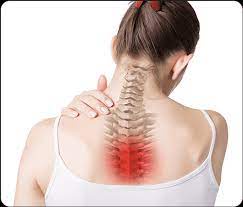Back pain is a pervasive and often debilitating condition that affects people of all ages and walks of life. It can range from mild discomfort to chronic, severe pain, impacting daily activities and overall quality of life. This article aims to provide insights into the causes, preventive measures, and treatment options for back pain, a common ailment that affects millions worldwide.
Causes of Back Pain:
-
Muscle Strain: One of the most prevalent causes of back pain is muscle strain. Overexertion, improper lifting techniques, or sudden movements can lead to strained muscles in the back, resulting in pain and discomfort.
-
Poor Posture: Prolonged periods of poor posture, whether sitting or standing, can contribute to back pain. Slouching or hunching over can strain the spine and its supporting muscles.
-
Structural Issues: Conditions such as herniated discs, spinal stenosis, or osteoarthritis can cause structural changes in the spine, leading to chronic back pain.
-
Injuries: Accidents, falls, or sports-related injuries can damage the spine, causing acute or chronic pain. Fractures or dislocations of the vertebrae are common in such cases.
-
Medical Conditions: Certain medical conditions, such as scoliosis, kidney stones, or infections, can manifest with back pain as a symptom.
Preventive Measures for Back Pain:
-
Maintain Good Posture: Being mindful of posture, whether sitting or standing, can significantly reduce the risk of developing back pain. Ergonomic chairs and workspaces can also support proper posture.
-
Regular Exercise: Engaging in regular physical activity strengthens the muscles that support the spine, promoting flexibility and reducing the risk of injury. Core-strengthening exercises are particularly beneficial.
-
Lift Properly: When lifting heavy objects, use proper lifting techniques. Bend your knees, keep the object close to your body, and avoid twisting while lifting.
-
Weight Management: Maintaining a healthy weight reduces the strain on the spine and minimizes the risk of developing back pain.
-
Quit Smoking: Smoking has been linked to a higher risk of back pain. Quitting smoking not only improves overall health but may also contribute to a healthier spine.
Treatment Options for Back Pain:
-
Rest and Ice/Heat Therapy: Resting and applying ice or heat to the affected area can alleviate acute back pain by reducing inflammation and relaxing muscles.
-
Over-the-Counter Pain Medications: Non-prescription medications like ibuprofen or acetaminophen can provide relief from mild to moderate back pain.
-
Physical Therapy: A physical therapist can design a tailored exercise program to strengthen the back muscles, improve flexibility, and alleviate pain.
-
Chiropractic Care: Chiropractors use manual adjustments to realign the spine and relieve pressure on nerves, often providing relief for certain types of back pain.
-
Surgical Intervention: In severe cases or when conservative treatments fail, surgical procedures may be recommended. This could involve procedures such as discectomy, fusion, or decompression surgeries.
Conclusion:
Back pain is a common ailment that can significantly impact daily life, but with proper understanding, preventive measures, and timely treatment, many individuals can find relief and regain functionality. By adopting healthy lifestyle choices, maintaining good posture, and seeking appropriate medical care when needed, individuals can take proactive steps to manage and alleviate back pain, ultimately enhancing their overall well-being.


No comments yet